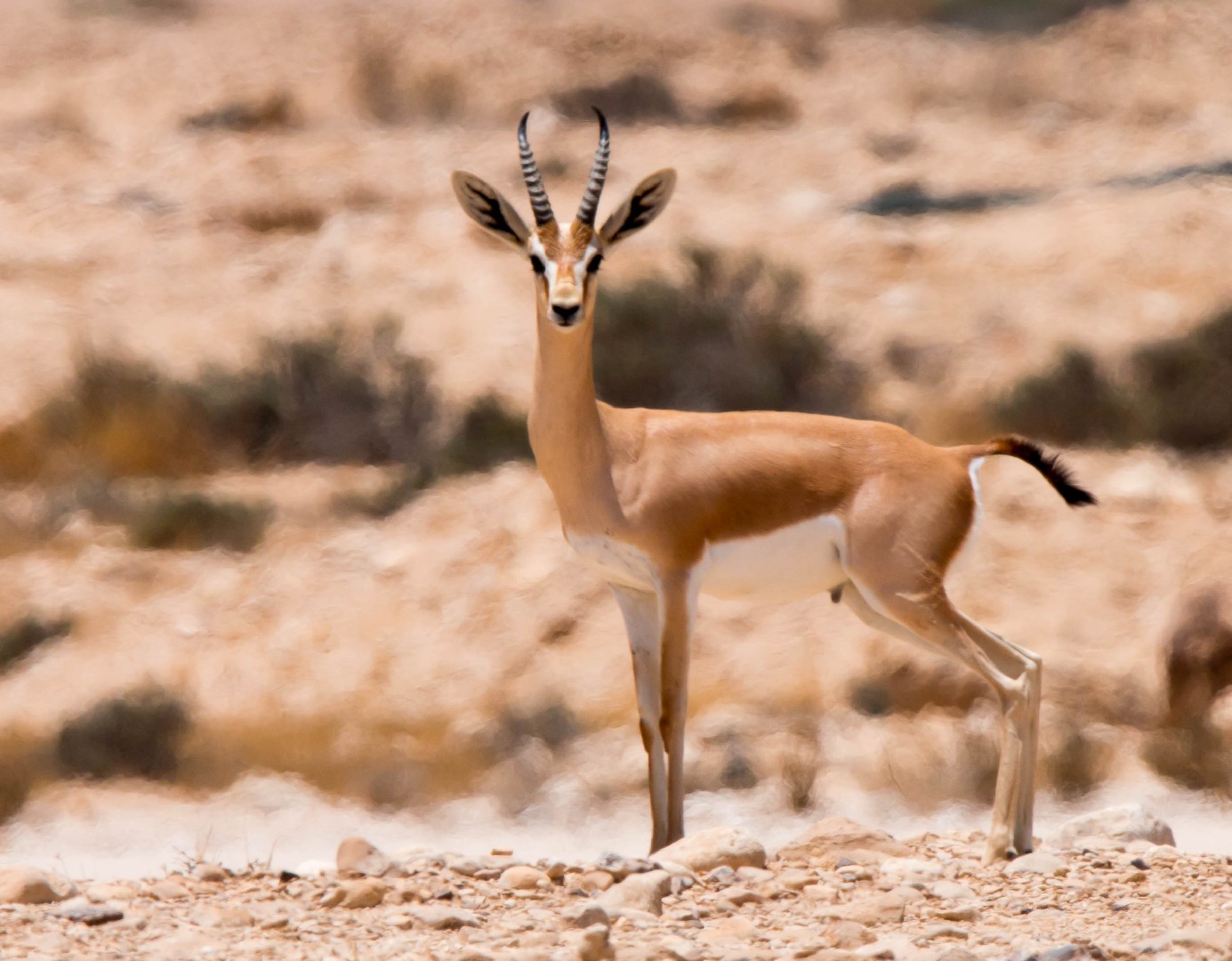Dorcas gazelle
A species of Slender gazelles, Also known as Moroccan dorcas gazelle Scientific name : Gazella dorcas Genus : Slender gazelles
Dorcas gazelle, A species of Slender gazelles
Also known as:
Moroccan dorcas gazelle
Scientific name: Gazella dorcas
Genus: Slender gazelles
Content
Description General Info
 Photo By מינוזיג - MinoZig , used under CC-BY-SA-4.0 /Cropped and compressed from original
Photo By מינוזיג - MinoZig , used under CC-BY-SA-4.0 /Cropped and compressed from original Description
The dorcas gazelle is similar in appearance to, yet smaller than, the closely related mountain gazelle (Gazella gazella). Dorcas gazelles have longer ears and more strongly curved horns, which bow outwards then turn inwards and forwards at the tips. Individuals belonging to the Saharan subspecies (G. d. osiris) have very pale, fawn-colored coats. The white underside is bordered with a brown stripe, above which is a sandy stripe. The forehead and face are darker than the body. Subspecies from north of the Sahara tend to be more ochre in color, and have dark flanks and facial stripes. Populations in Israel and around the Red Sea are darker and more reddish. In the last century, the populations of dorcas gazelle were partially destroyed in all the countries where it was found. Currently, large populations of dorcas gazelles are found in the Negev and the Arava, with other large populations in Sudan, Iraq, and the southern part of the eastern desert of Egypt. In Israel, only 1000-1500 gazelles remain. 
General Info
Lifespan
10-15 years
Diet
The dietary habits of dorcas gazelle primarily revolve around plant matter, keeping its diet primarily herbivorous. With a keen preference for foliage, grasses and shrubs, it is also known to consume fruits, pods, and leaves. In arid regions, dorcas gazelle adjusts its diet to consume plants containing water to fulfill hydration needs.
Appearance
Dorcas gazelle is a small antelope with a slender body covered in short, sleek fur. Its general coloration is fawn, but features a white belly and dark stripes on the flanks. Notable are its ringed horns, relatively long in males and slender in females. Also distinct is its large, dark eyes and high-set tail. There are no significant variations in appearance between different age groups or subspecies.
Behavior
Dorcas gazelle is predominantly solitary, especially males. However, in areas with abundant resources, larger groups can form. Being a daytime species, dorcas gazelle exhibits a crepuscular foraging pattern, feeding at dawn and dusk to avoid midday heat. Notably, territorial behavior includes males using glands near the eyes to mark grasses around territories. Dorcas gazelle's survival strategy includes speed and unpredictability to avoid predators.
Population
Decreasing